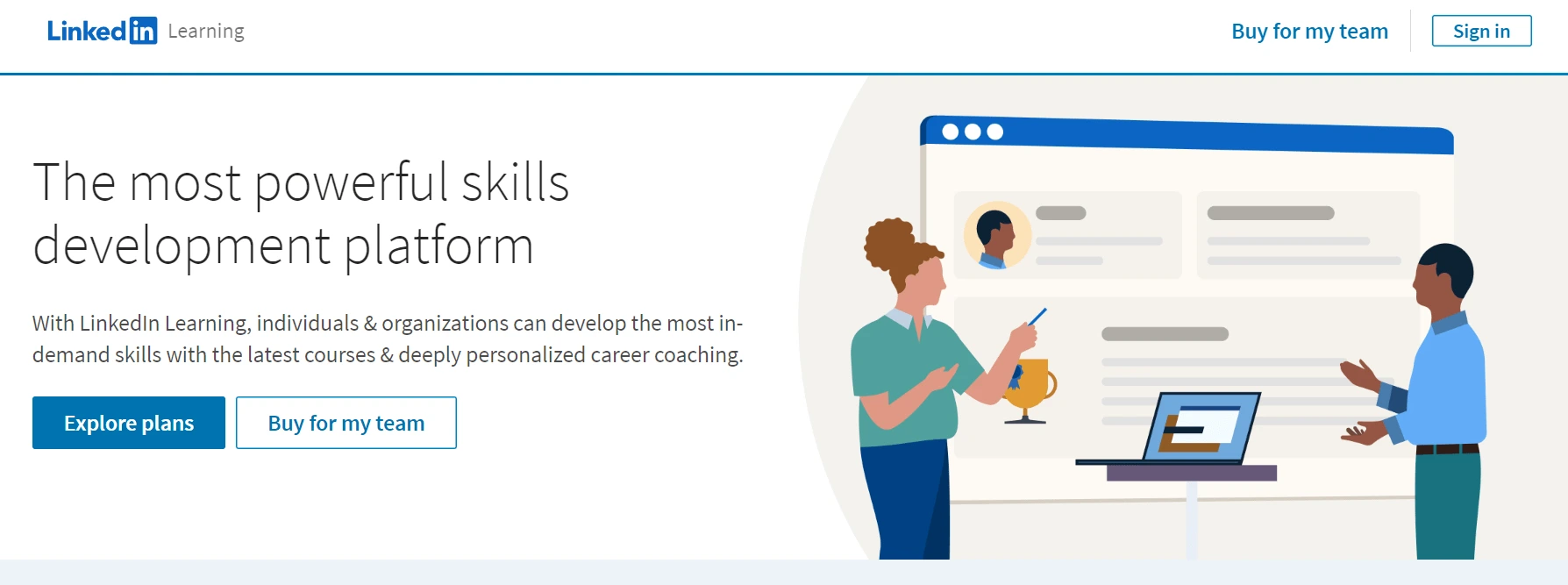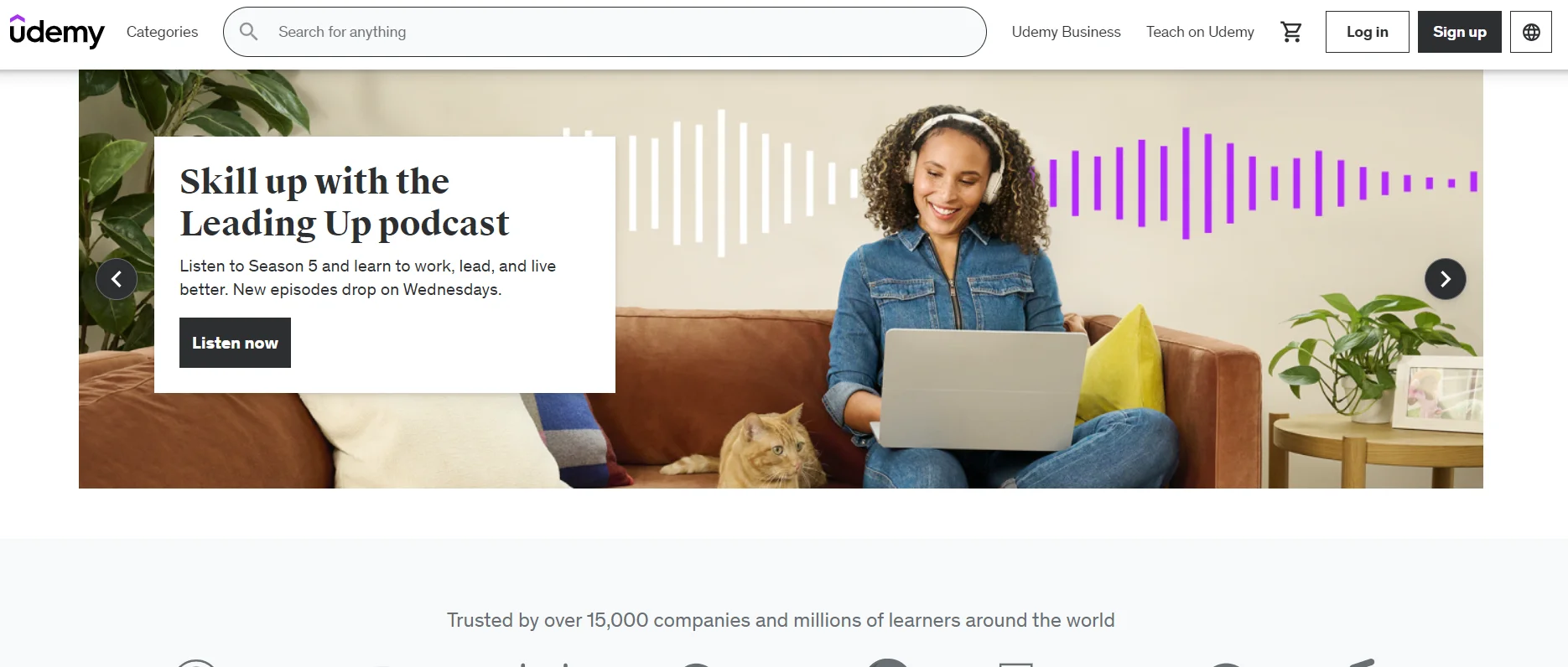Strangely, some affiliate links generate thousands of dollars while others barely get any attention. Are you also wondering why this happens?
Well, there are a variety of factors that can influence the success of an affiliate link. These include the quality of the content, the topic, the target audience, and the effectiveness of the promotion.
Making money with affiliate links isn’t always easy. It’s not just about the links themselves but also the products or offers you’re promoting and how you share them.
Promoting affiliate links is like a mix of being creative and using some strategies. You need to share these links in a way that makes them stand out from all the other stuff people see online.
You also need to make sure the links match what your audience wants and explain why the products or services are good.
But you should do all of this without coming across as desperate or annoying. If you want to learn how to do this in a way that your audience will appreciate and you, in turn, will earn BIG BUCKS, then keep reading to find some helpful tips.
Content Outline
How to Promote Affiliate Links?
1. Product reviews for affiliate offers
Product reviews are a popular way to make money with affiliate marketing. The idea is that when people read reviews about products, they are very close to deciding to buy.
If you provide them with your special affiliate link at the right moment, you can earn a commission when they make a purchase.
The key is to review products that have a good chance of converting into sales, offer decent commissions, and are in demand so you can make a meaningful income from them.
Don’t limit yourself to just everyday products like those on Amazon. You can also review:
- Physical Products: Stuff like outdoor gear or fancy clothing.
- Digital Products: Such as software tools or online courses.
- Services: Like bank accounts or travel experiences.
Digital products and services often offer higher commissions because they cost less to make than physical items.
Creating a product review that convinces people to buy isn’t super hard, but you might need to try different things to see what works best.
Simple Plan to Get You Started-
Use Your Affiliate Links Wisely:
Put your special links in your review where it makes the most sense. Don’t put too many, though. Use words that make people curious to click on your links. For example, say things like “Check out this exact product” or “See more pictures” to make them want to click and learn more.
Examples of products you could review:
- Physical Products: Hiking boots, fancy watches, cameras, or designer handbags.
- Digital Products: Software for photo editing, online courses about cooking, or tools for managing finances.
- Services: Review different banks and their accounts, or write about your travel experiences and the companies you booked with.
Remember, the goal is to help people decide whether to buy something and make it easy for them to do it through your affiliate link.
2. Inside a free email course
Email marketing has always been known for its cost-effectiveness, and this remains true in 2024. This cost-efficiency applies to affiliate marketing as well, just like other forms of digital marketing. Here’s a detailed explanation of why email affiliate marketing is so effective and how you can make the most of it:

1. Reliable Reach: Email marketing allows you to reach potential buyers reliably without worrying about changes in search engine algorithms or social media platform updates. Your messages land directly in your subscribers’ inboxes, ensuring your content is seen.
2. Repeat Sales: Unlike trying to convince new buyers from scratch each time, email affiliate marketing lets you sell to the same audience repeatedly. Building a relationship with your subscribers over time can lead to more affiliate sales.
3. Timely Offers: Email is an excellent platform for sharing time-sensitive information, such as discounts, deals, or limited-time offers. These can significantly boost conversion rates because subscribers are more likely to take action when they know the offer won’t last long.
4. Email Courses and Affiliate Links: Email courses are a valuable tool for growing your email list. An email course consists of a series of emails sent over a specific period, with the goal of teaching subscribers something valuable. These courses are also an ideal place to incorporate your affiliate links.
Examples of Email Courses and Affiliate Promotions:
Imagine you’re running a blog about online security, and you offer an email course on “Internet Safety Tips.” Here’s how you can naturally promote affiliate products within the course:
First Email: You can recommend a premium password manager as a crucial security tool.
Third Email: Suggest a VPN service through an affiliate program to protect online privacy.
Fifth Email: Provide a detailed review of an antivirus program with an affiliate link for subscribers to purchase it.
This strategy works well because it aligns with the course’s topic and provides valuable recommendations to your subscribers while earning you affiliate commissions.
Benefits of Email Courses:
- Evergreen Content: Most email courses remain relevant over time. You create them once, and they continue to build your email list and generate affiliate revenue.
- Automation: Email courses can be set up to run on autopilot, which means they work for you 24/7 without constant supervision.
- Upselling Opportunities: After subscribers complete a free email course, you can upsell them to a more expensive paid product or service, maximizing your revenue.
In essence, email affiliate marketing through well-crafted email courses is a powerful and automated way to monetize your email list, providing valuable content to your subscribers while generating income through affiliate partnerships.
3. Link your own products with affiliate links
Monetizing your website by selling your own products is a highly effective strategy because you get to keep all the profits.
However, what if there was a way to combine this with affiliate marketing and earn additional income without reducing your earnings from your own products? That’s precisely what some platforms and merchants allow you to do.
How Does This Work?
Let me explain to you in detail how this hybrid approach works:
1. Selling Your Own Products:
When you sell your own products on your website, you keep all the money from each sale. This can be very lucrative and provides full control over your offerings.
2. Affiliate Links for Your Own Products:
Some platforms and marketplaces, like LinkedIn Learning or Udemy, enable you to use affiliate links to promote your courses or products. In other words, you can refer people to your own offerings through these special links without reducing your earnings per sale.
Examples of How It Works:
LinkedIn Learning: If you’re an instructor on LinkedIn Learning, you can use affiliate links to share your own courses. The unique thing here is that you can potentially earn even more as an affiliate than what you would earn as an instructor. This is because, with this model, you are effectively doing both roles – creating the content and referring students.

Udemy: Similarly, Udemy allows you to use affiliate links when promoting your own courses. This means that every time you mention your course and include an affiliate link, you have the opportunity to earn extra income from affiliate commissions in addition to your course sales.

Amazon Kindle Books: If you’re an author selling Kindle books on Amazon, you can also take advantage of Amazon’s affiliate program. When you promote your own books using affiliate links, you can earn not only from book sales but also from any other products customers purchase through your affiliate links during their shopping sessions.
How to Implement This Strategy?
Whenever you mention or promote your own products, include affiliate links. These affiliate links can lead potential customers not only to your products but also to related products or services.
If those customers make additional purchases through your affiliate links, you earn commissions on those sales as well.
Benefits of This Approach:
- Maximizing Revenue: By selling your own products and earning affiliate commissions, you diversify your income streams.
- No Reduction in Earnings: Importantly, using affiliate links to promote your own products doesn’t diminish the money you make from selling your offerings directly.
- Increased Earnings Potential: By strategically including affiliate links, you can potentially earn more than you would by only selling your products.
As a result of this approach, you can increase your income from affiliate marketing while still enjoying the full profits from your own products. Combining the best of both worlds, it’s a win-win strategy.
4. Gift guides and product roundups
Product roundups are an incredibly effective strategy for affiliate marketing, mainly because they cater to potential buyers who are early in their decision-making process.
These buyers are exploring their options, making them more likely to click on affiliate links. Additionally, these customers often haven’t been influenced by other affiliate marketers yet, so they’re less likely to have pre-existing affiliate cookies, increasing your chances of earning commissions.
Importantly, product roundups allow you to gauge which products resonate most with your audience.
You can then focus on creating more detailed content or reviews for these high-performing products. When crafting a product roundup, it’s crucial to get straight to the point.
- Start with a brief introduction and quickly present your top pick, integrating affiliate links early and prominently.
- Provide detailed yet concise information about each product, highlighting key features and benefits.
- Use an appealing layout with product images to enhance readability. Regularly update your content to keep it relevant.
This approach not only helps in making your content more engaging but also increases the likelihood of conversions through your affiliate links.
5. Run pay-per-click ads

Boosting your site’s conversion rate might be a challenge, even with a steady flow of organic traffic. This is where social media retargeting ads can play a crucial role.
The idea is to target people who initially discovered your site via search engines like Google and draw them back to your website, giving them that extra push they might need to complete a purchase.
If you’re unsure about crafting your own ads, a great resource is the Facebook Ads Library. It’s a tool where you can explore the types of ads your competitors or favorite blogs are running on their Facebook pages. This can provide valuable insights and inspiration for your campaigns.
However, there’s an important caveat to consider: not all affiliate programs permit pay-per-click (PPC) ads.
This limitation often arises because when both affiliates and brands bid for the same keywords, the cost per click can escalate, making the process less efficient and more expensive for both parties.
Consequently, some brands restrict affiliates from promoting affiliate content through ads and, more stringently, from using direct linking – a method where your affiliate link is directly promoted in an ad.
A smart strategy is to seek out affiliate programs that still credit you for conversions achieved through retargeting campaigns, even after your affiliate cookie has been set.
This approach ensures that you get recognized for the initial referral, even if the customer returns to the website through a retargeting ad.
This way, you can enhance your conversion rates while adhering to the guidelines of the affiliate programs
6. Share deals and offers with your email list
Using fake scarcity as a marketing tactic can be tempting, but it often backfires, damaging your brand’s reputation, especially if you’re aiming to cultivate a loyal customer base.
Using limited-time offers and deals is a more effective and authentic way for affiliates to leverage natural scarcity.
Affiliates can benefit from seasonal sales and special discount codes provided by brands they’re affiliated with.
It can be especially effective to share time-sensitive promotions via email. Email marketing is known for its high conversion rates, and the inherent urgency of limited-time offers makes this approach even more compelling.
It’s crucial, though, to maintain regular communication with your email list. Don’t just reach out when you have something to promote. Consistent engagement is key to building trust and keeping your audience interested and responsive.
One thing to be mindful of is the commission structure for sale items. Many advertisers lower the commissions on discounted products, and some may not offer any commission on them. It’s important to check the commission policies of the brands you’re partnering with to understand how this might affect your earnings.
While you may still earn commissions on full-priced items in the same transaction, solely focusing on deal-seeking customers can be risky over time.
If your audience is only interested in discounts, it might limit your ability to promote full-priced products effectively. Therefore, while leveraging limited-time offers is a great strategy, balance is key to ensuring long-term success and audience engagement.
7. Inside podcast show notes

Podcasts are becoming a popular way to share content, similar to how guest blogging used to be. When you invite guests to your podcast, they get a chance to share their website link, and you get interesting content for your listeners for free.
But there’s another cool thing you can do: if your guest has a great product or a special deal, you can use an affiliate link to link to their offer.
Let’s look at an example from Pat Flynn’s podcast. Pat used an Amazon affiliate link to promote a product called Launch.
This means if someone listens to his podcast and decides to click on this link, they might buy something on Amazon. If they do, Pat earns some commission from that sale because he used his affiliate link.
One important thing to remember is that you need to be open about using affiliate links. This means you should clearly tell your audience somewhere on your podcast page that you’re using these links and might make money from them. This keeps everything transparent and honest with your listeners.
8. Resource pages
Resource pages on your website are like a treasure trove of all your favorite tools, services, or brands that you regularly use and recommend.
On these pages, you can list various resources, and for each one, you can add an affiliate link. It’s even better if you can include special deals or discount codes with these links to encourage people to make a purchase.
Imagine you’re a digital marketing expert, and you’ve got a website where you list all your favorite digital marketing tools and software.
This special page is called a resource page. Here, you put links to all these tools, and these aren’t just any links; they’re special ones called affiliate links. When someone clicks on these links and buys something, you get a small commission.
For example, on your resource page, you could have a list of the best email marketing software you use, your favorite website design tools, and maybe some cool social media management platforms.
Next to each tool, you can write about your own experience with it, like why you like it and how it helps in your work. This makes your recommendations more personal and trustworthy.
Now, your resource page might not get a lot of people visiting it just by searching on Google. But, when you send out emails to people who follow you because they want to learn more about digital marketing, you can include a link to this resource page.
This is a smart move because the people getting your emails are already interested in digital marketing.
So, when they see a list of useful tools that a pro like you uses, they might be more likely to check them out and even buy them. And when they do, those affiliate links on your page can earn you some extra money!
Indeed, resource pages might not attract huge amounts of organic traffic by themselves. However, they become really effective when you promote them through your email campaigns.
For example, if someone signs up for your emails because they want to improve their baking skills, including a link in your emails to your page of recommended baking equipment can be very relevant.
This approach matches the buying interest of your subscribers.
It guides them towards products that could be useful for them, with the added benefit of potentially earning you some commission through affiliate links.
9. Affiliate Links on Pinterest

Pinterest might look like just another social media platform, but it’s actually more like a search engine. This is great for you because it means there’s way less competition than Google for getting your digital marketing content seen by more people.
Another cool thing about Pinterest is that it loves new content. So, it can help bring people to your digital marketing blog quicker than waiting for Google to notice you.
Now, using Pinterest for affiliate marketing is a bit different than using Google. The people browsing Pinterest, called Pinners, usually aren’t familiar with your blog yet.
So, if you want to make affiliate marketing work on Pinterest, you should focus on getting these Pinners to sign up for your email list. This is done by creating content that’s specifically designed to be popular on Pinterest.
Let’s say you have a digital marketing blog. You could create a Pinterest post about the top tools for digital marketing in 2024. Include affiliate links to these tools in your post.
You could also offer a downloadable PDF with exclusive digital marketing tips for a small fee and maybe even a free checklist as a bonus for those who subscribe to your email list.
This strategy not only gets people to click on your affiliate links but also helps in building an email list of potential future buyers.
While getting clicks on your affiliate links from Pinterest is awesome, the real magic of Pinterest is in gathering a following that will trust and buy from you in the future.
10. Affiliate Links on YouTube
YouTube has become a go-to spot for watching product reviews. Why? A lot of written product reviews out there repeat what’s on the product’s website.
Many are written by freelancers who haven’t actually used the product they’re writing about. YouTube is different – it’s about videos, so people can really see the product in action.
Videos give a more genuine, hands-on look at products, which is why viewers trust them more. Also, making a good video can be more challenging than writing an article, so there’s usually less competition on YouTube, especially for products people really want to buy.
Take video gaming as an example. YouTubers who are into gaming often make videos where they show and talk about gaming products.
If they use affiliate links in their video descriptions, they can earn money when viewers buy products through those links.
A smart trick is to make YouTube videos and then put them in your blog posts. This way, people spend more time on your blog (because they’re watching the video), and you get to show your affiliate links to more people – both on YouTube and your blog.
11. Facebook Affiliate Links
Some companies use Facebook to share affiliate links directly, but a better strategy is to create your own community on Facebook. This means starting and managing your own Facebook Page and a Facebook Group.
Facebook Groups are really good for gathering people who share similar interests or goals. If you can create and share content in the group that helps solve their problems or answers their questions, you have a chance to reach these people regularly.
This way, instead of just posting links, you’re building a relationship with your group members and giving them valuable information.
Over time, they’ll trust you more, which can make them more interested in the products you recommend through your affiliate links.
12. Affiliate Marketing on Instagram
Unlike Pinterest, where users mostly browse and explore, people on Instagram are often ready to make a purchase. This makes Instagram a great place for sharing affiliate links, especially if you’ve built the right audience.
For example, The Everygirl, a popular lifestyle brand, cleverly uses a special page on their website, linked from their Instagram profile (the ‘link in bio’), to direct followers to products featured in their posts.
Since Instagram only lets you have one link in your bio, it’s important to have a mobile-friendly page on your site that acts as a gateway to all the products you’re promoting. This way, your followers can easily find and buy these products.
What is an Affiliate Link, and How does it work?

An affiliate link is a special web link given to you by a company. It’s unique to you and helps them keep track of the people you send their way.
When those people make a purchase, you earn a commission, which is like a reward for bringing them new customers.
How Affiliate Marketing Works?
- You Share the Link: You put this special link on your website, blog, or social media posts.
- Someone Clicks It: When someone clicks on your special link, they’re taken to the company’s website.
- Tracking: The company uses something called a “cookie” to remember that the person came from your link.
- Purchase is Made: If the person buys something from the company’s website, you get credit for it.
- You Get Paid: You receive your commission, which is like a thank-you payment, from the company through an affiliate network.
Parts of an Affiliate Link:
1. Affiliate Tracking Domain:
An affiliate tracking domain is like a special website set up by the affiliate network. Its main job is to help keep track of the people who click on your affiliate links and visit the brand’s or advertiser’s website.
Why it’s Important: This tracking domain ensures that when someone clicks your link, the affiliate network can record it and attribute any future purchases to you. It’s the starting point of the journey that helps you earn commissions.
2. Affiliate Identifier:
This is a unique ID or code that tells the company that you referred someone to them. It’s like your digital fingerprint, and it’s embedded in your affiliate link.
Why it’s Important: Without this identifier, the company wouldn’t know who sent the customer their way, and you wouldn’t get credit for the referral. It’s how the company knows to reward you for your efforts.
3. Merchant/Advertiser Identifier:
This part of the affiliate link identifies the specific company or merchant that you are promoting. It helps the affiliate network know which business is involved.
Why it’s Important: It’s crucial because it tells the affiliate network which company’s products or services the customer is interested in. This way, the network can match the sale to the right business and calculate your commission accurately.
4. SubID:
SubID is like a customizable note you can add to your affiliate link. It’s handy for keeping track of where you shared the link or what content led to the click.
Why It’s Important: By using SubIDs, you can analyze which of your strategies or content is most effective in driving sales. It helps you understand what’s working and what needs improvement in your affiliate marketing efforts.
5. Deeplink:
A deep link allows you to send your audience directly to a specific page on the company’s website rather than just its homepage. For example, you can send them to a particular product page or a special landing page.
Why it’s Important: Deeplinking enhances the user experience. It takes your audience exactly where they want to go, increasing the chances of them making a purchase because they don’t have to navigate through the website to find what they’re looking for.
Remember, affiliate marketing is a way to earn money by helping companies find new customers. It’s a win-win when you do it right because you get paid for your efforts, and the company gets new customers. Just be sure to be transparent with your audience and only promote products or services you genuinely believe in.
How do you Track your Affiliate Links?
Now, when it comes to tracking the success of your affiliate links, it’s important to know which strategies work best for your audience.
Don’t try everything at once; instead, focus on one approach at a time so you can clearly see what’s working.
The main way to track your affiliate links is using something called SubId tracking.
It’s a bit like how utm_campaign works in Google Analytics but for affiliate links. For instance, you might track revenue back to a specific button on your website to see how effective it is.
If your main goal is to drive more visitors to your affiliate content website or blog, you might want to use an automated tracking method to make things easier and more efficient. This way, you can focus more on creating great content and less on the technical side of tracking.
Quick Links
- Is Affiliate Marketing Still Worth
- How To Become An Affiliate Marketer?
- Best Affiliate Marketing Niches
- Major Scams In Affiliate Marketing
- How Content Traffic Monetization Works?
Conclusion- How To Promote Affiliate Links in 2025?
I’ve noticed a lot of folks stumble a bit when it comes to affiliate marketing. Often, affiliate marketers fail to pick the right spots to share their affiliate links, bury these links too deep in their articles, or promote products that their audience does not want.
If you’re looking to up your game in affiliate marketing, the strategies listed above will surely help you. See how these fit with your website and your audience’s vibe.
And hey, don’t forget to keep an eye on which ones are hitting the mark! When you track your results, you get an insight into exactly where to direct your energy for the best results.
Do let me know if you follow any other strategy that will benefit us. I will include that in my list as well.
